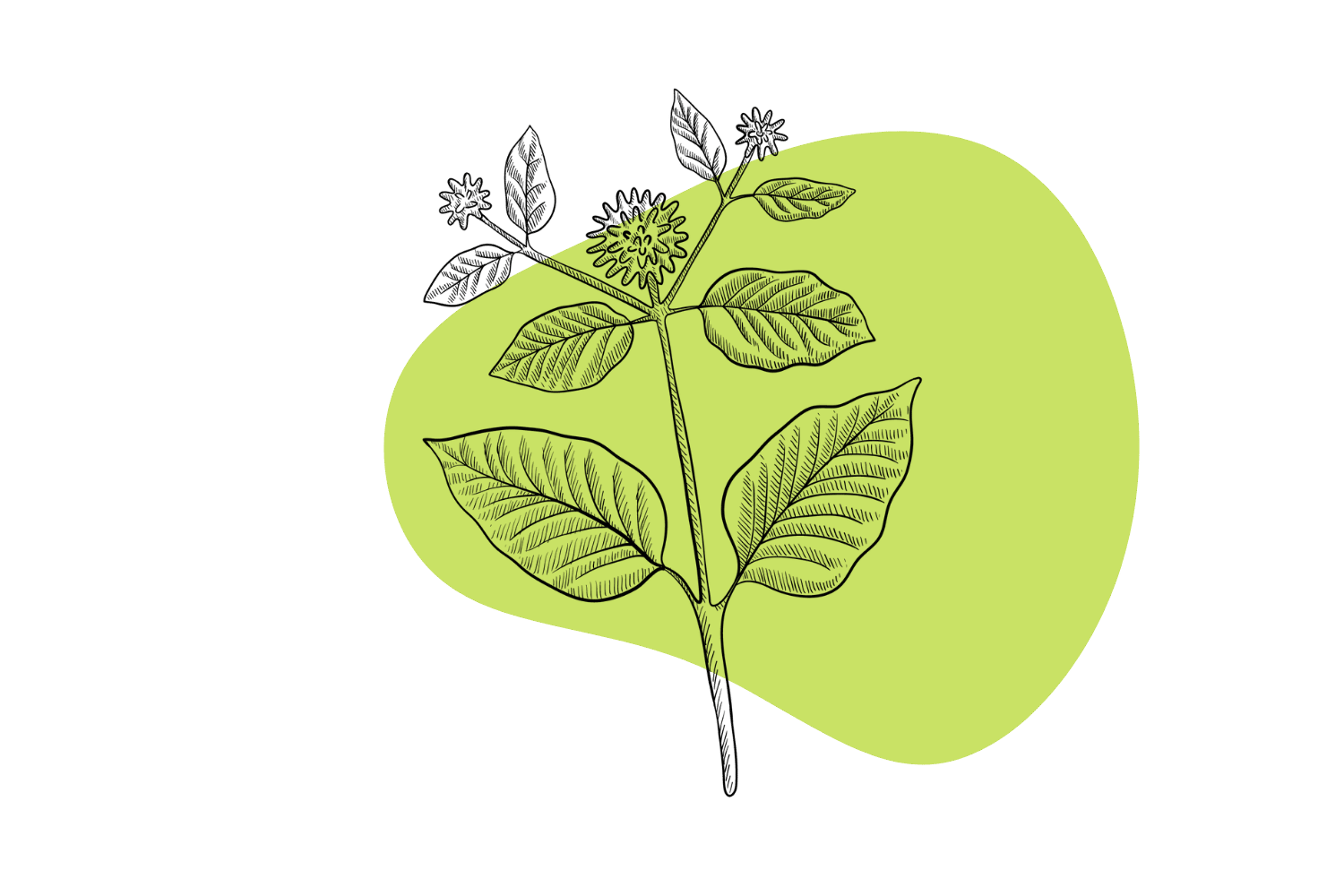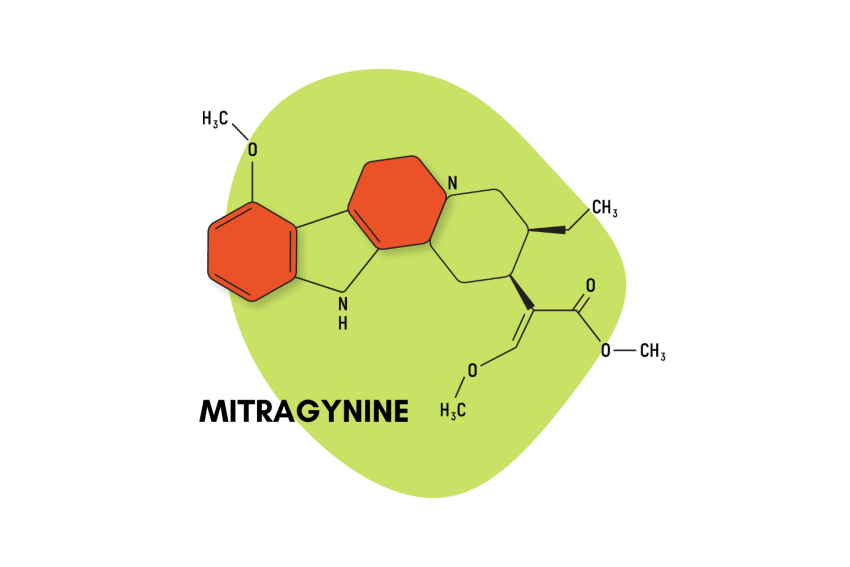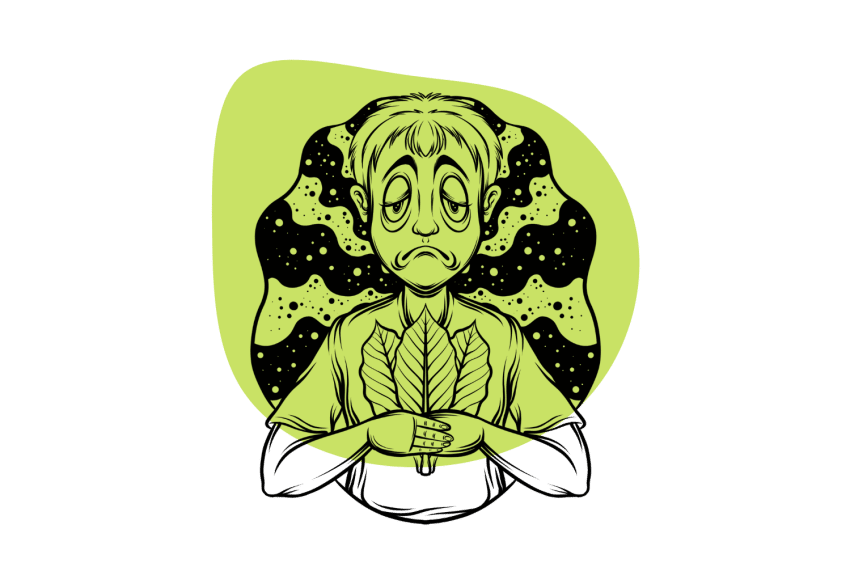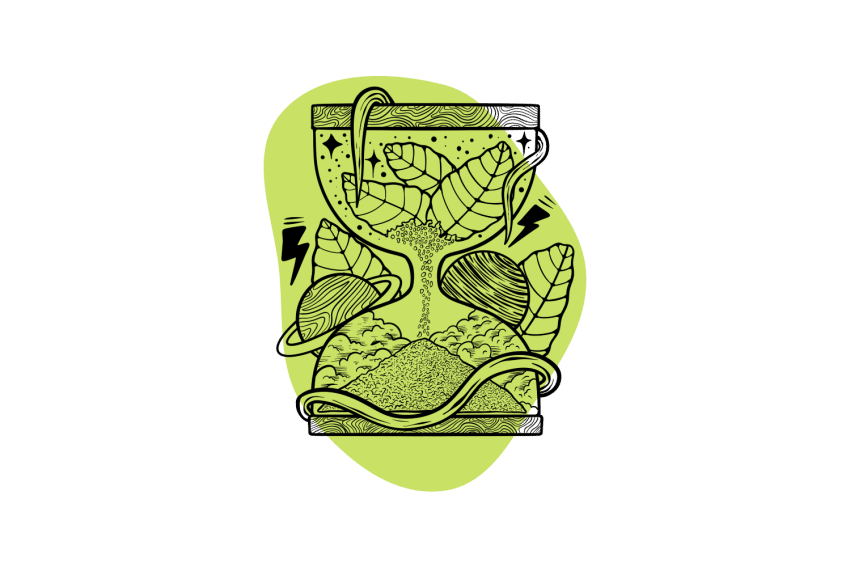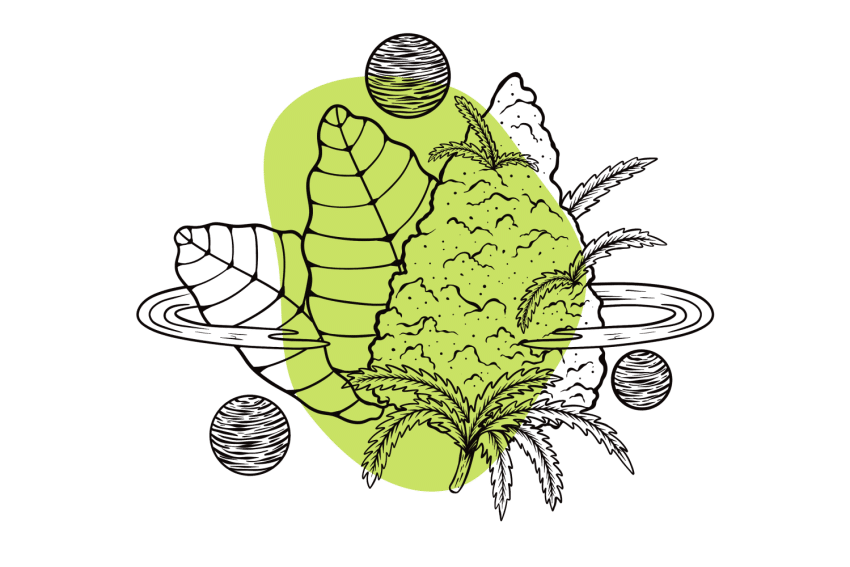Corynantheidine: All About This Crucial Kratom Alkaloid
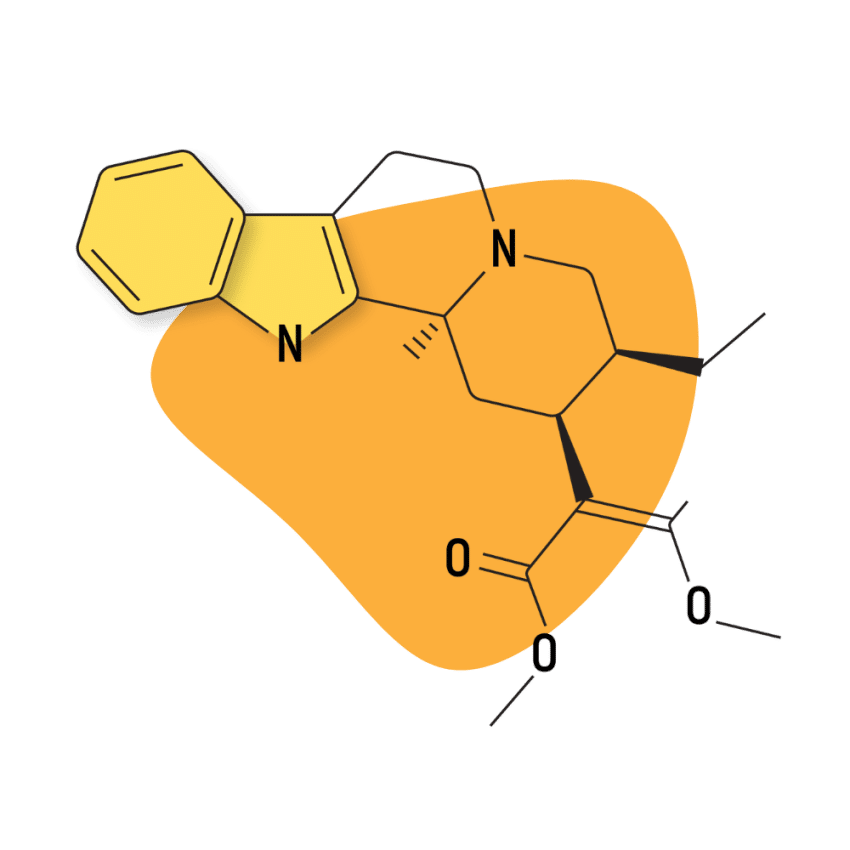
Corynantheidine is just one of over 50 active alkaloids produced in the kratom tree (Mitragyna speciosa).
An alkaloid is a natural nitrogen-containing compound with powerful pharmacological effects in humans. Corynantheidine is one of the more important alkaloids in the plant, contributing to the plant’s impressive pain-relieving qualities.
In this guide to corynantheidine, we’ll discuss what this compound is, how it works, where it comes from, and the effects you can expect from strains that contain high levels of this unique compound.
What Is Corynantheidine?
Corynantheidine is best known for its opioid-like action. This effect results in powerful pain relieving, euphoric, and sedative qualities.
However, these effects are largely influenced by other major alkaloids, too, such as mitragynine and 7-hydroxymitragynine. These two alkaloids together make up more than 70% of the total alkaloid profile of the plant — corynantheidine is much less abundant than these other major alkaloids.
Corynantheidine is classified as an oxindole alkaloid with two rings in its molecular makeup — one made up of benzene and another of nitrogen.
Unfortunately, there’s relatively little research available on corynantheidine alone.
This alkaloid appears in low concentrations in kratom, so it’s challenging to isolate and study its effects without the influence of other kratom-derived alkaloids. As such, corynantheidine isn’t particularly well understood, and much of what we know about it is speculative.
Which Kratom Strains Are Highest in Corynantheidine?
All kratom strains appear to contain some level of corynantheidine, but the percentage can vary from one plant to the next.
This alkaloid appears in small concentrations regardless of the specific strain, but experts believe that red-vein kratom strains likely contain the highest volume of corynantheidine.
This isn’t based on strain-to-strain testing. Instead, it’s inferred from the fact that corynantheidine is an opioid agonist, so higher concentrations are more likely to provide pain relief and relaxation. Since red vein kratom strains are unanimously considered stronger for pain relief, it’s reasonable to assume these plants contain a higher ratio of painkilling alkaloids like corynantheidine too.
What Does Corynantheidine Do & How Does It Work?
Little is known about the specific effects of corynantheidine in the human body, although research has concluded that it acts as an opioid receptor agonist, much like mitragynine. Below, we’ll include a brief list of the known and supposed effects of corynantheidine.

Pain Relief
The one effect of corynantheidine that’s been substantiated by research is that it can provide pain relief. Specifically, it is known to bind to μ-opioid receptors, which are responsible for controlling pain signals traveling from the body to the brain [1]. When corynantheidine binds to opioid receptors, they block or dull the transmission of pain before it arrives in the brain, thus alleviating pain perception.

Euphoria
One of the byproducts of acting on the opioid and dopaminergic receptors is the feeling of euphoria. These systems are intimately connected with the pleasure-reward system in the brain. By activating this system, compounds like corynantheidine are believed to play a key role in kratom’s euphoric and mood-boosting qualities.
Unfortunately, this same pathway is also associated with the addictive potential of kratom (as well as synthetic opioids).

Improved Sleep
Corynantheidine is believed to help users fall asleep more quickly and get better quality sleep overall. The primary reason for this is that the alkaloid binds to alpha-adrenergic receptors in the body, likely more readily than mitragynine and other alkaloids [3]. These receptors are a primary part of the fight-or-flight response, as they help control the body’s sympathetic nervous system [4]. They’re also responsible for controlling hormones linked to stress, including epinephrine.
The interaction of alkaloids like corynantheidine on the stress response is complicated. In lower doses, these substances appear to stimulate these receptors — causing users to feel a boost in mental and physical energy levels. However, in higher doses, the effects are the exact opposite — causing users to feel relaxed and sedated instead.
What Other Plants Contain Corynantheidine?
At this time, kratom is the only known plant to contain corynantheidine. However, since it’s present in such small quantities in the Mitragyna speciosa tree, it may go undetected in other plants that aren’t well-researched.
Experts believe corynantheidine may be present in other members of the Rubeacieae family (coffee family) — such as Coffea arabica (coffee) or Pausinystalia johimbe (yohimbe).
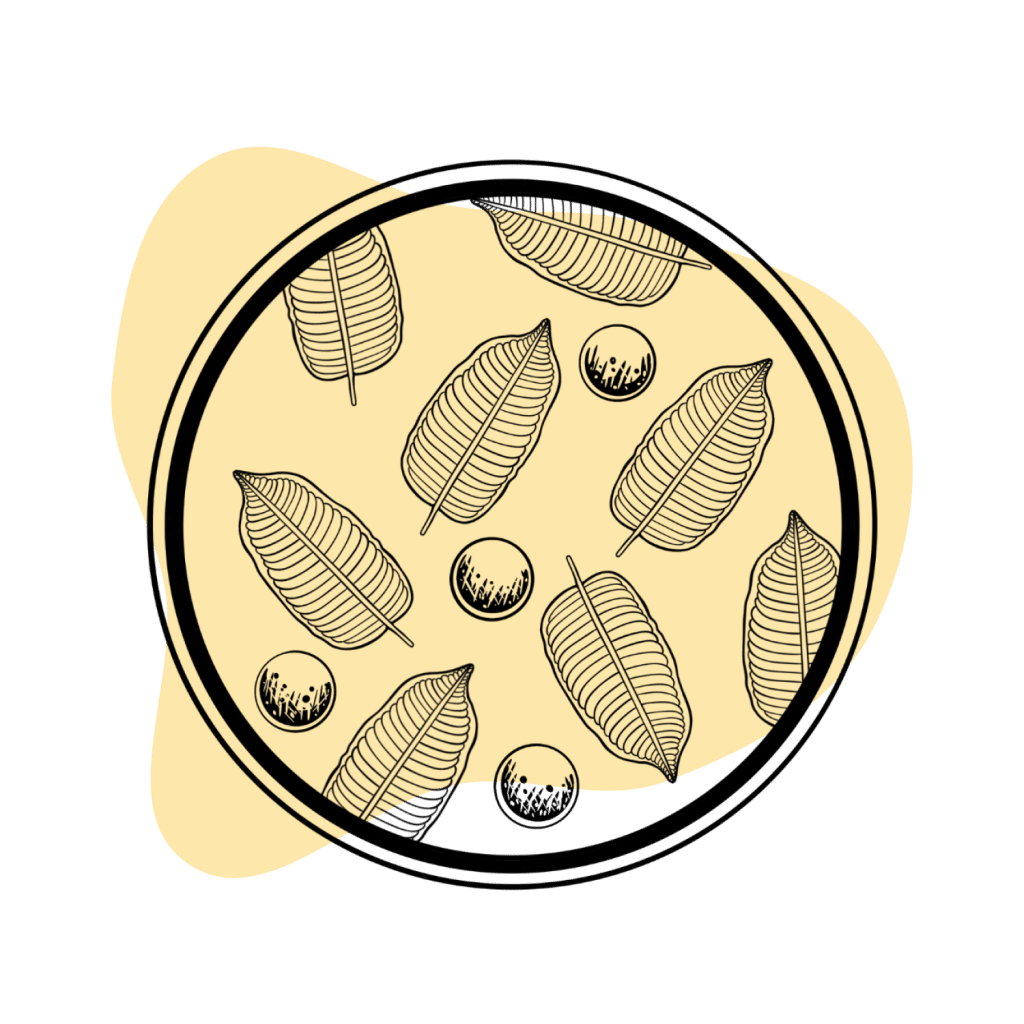
Another herb, called Cat’s Claw (Uncaria spp.), shares much overlap with kratom in terms of active ingredients. Its possible plants in this genus contain corynantheidine or other related alkaloids.
Is Corynantheidine an Opiate?
No, corynantheidine is not an opiate, nor are any of the other alkaloids contained within kratom. Corynantheidine does interact with opioid receptors in the body, but it’s chemically and molecularly distinct from the opiate family of molecules.
That said, corynantheidine has pain-relieving and relaxing effects very similar to opiate drugs. As a result, kratom is used as an alternative to these drugs and has even been employed successfully as a treatment for withdrawal symptoms in people who recently quit using opiate drugs.
Is Corynantheidine Safe?
Corynantheidine is generally considered safe in the whole-plant form. The concentrated extract has not been properly tested.
Kratom comes with some risks users should be aware of. This plant is very strong and can become a crutch if users aren’t careful. Too much kratom can lead to problems with addiction and withdrawal.
Overdoses are also common but exceptionally rare on their own. The risk of overdose is increased exponentially when kratom is mixed with other depressants, including opiates, benzodiazepines, alcohol, or GHB.

When taken responsibly, most users can mitigate the risk of addiction. Taking kratom safely involves limiting your daily intake, consuming it no more than five days a week, and taking week-long breaks at least once a month.
It’s important to question your relationship with the plant every once in a while. The same goes for any psychoactive substance.
Consider why you’re using the plant. Are you compelled to use it out of habit, or are you using it as a coping mechanism for other, more salient issues? Are you finding the active dose of kratom is significantly higher than when you first started?
If the answer is yes to either of these, it may be time to take a tolerance reversal break for a while.
Side Effects of Corynantheidine
The side effects of corynantheidine alone are unknown at this time, as minimal research has been done on the isolated alkaloid. However, you should be aware of some side effects of kratom use.

First, taking strains high in corynantheidine can result in lethargy over time. Failing to take breaks or limit consumption can also lead to kratom addiction in some users. Some of the more acute side effects include nausea, vomiting, gastrointestinal upset, dizziness, mental fog, and feelings of anxiety.
How Much Corynantheidine Should I Take?
As mentioned above, corynantheidine is rarely available as a standalone alkaloid, so most people consume it by taking kratom powder.
While there’s no single kratom dosage that works for everyone, you can follow the general guidelines below based on your desired effects:
- For energy & stimulation — 1 to 3 grams
- For relaxation, mild pain relief, & assistance with sleeping — 3 to 6 grams
- For severe pain relief & sedation — 6 to 8 grams
How Long Do the Effects of Corynantheidine Last?
It’s unknown how long corynantheidine provides effects since it’s not typically taken by itself. However, the effects of kratom usually last between one and five hours, with larger doses typically lasting longer than smaller doses.

Wrapping Up: Corynantheidine’s Role in Kratom’s Effects
Corynantheidine is a minor alkaloid found naturally in the kratom tree, and although it occurs in minimal quantities, it’s believed to contribute some important effects to kratom. These include pain relief, relaxation, and acting as a sleep aid. At this time, little is known about corynantheidine, although there is some research to substantiate these findings.
Red-vein strains are believed to have the highest concentration of corynantheidine, as they are considered the best for pain relief and sedation. If you’re looking for these effects, choosing a red-vein strain and aiming for a moderate-to-high dose is likely best for you.
References
- Váradi, A., Marrone, G. F., Palmer, T. C., Narayan, A., Szabó, M. R., Le Rouzic, V., … & Majumdar, S. (2016). Mitragynine/corynantheidine pseudoindoxyls as opioid analgesics with mu agonism and delta antagonism, which do not recruit β-arrestin-2. Journal of medicinal chemistry, 59(18), 8381-8397.
- Pradhan, A. A., Befort, K., Nozaki, C., Gavériaux-Ruff, C., & Kieffer, B. L. (2011). The delta opioid receptor: an evolving target for the treatment of brain disorders. Trends in pharmacological sciences, 32(10), 581-590.
- Obeng, S., Kamble, S. H., Reeves, M. E., Restrepo, L. F., Patel, A., Behnke, M., … & McCurdy, C. R. (2019). Investigation of the adrenergic and opioid binding affinities, metabolic stability, plasma protein binding properties, and functional effects of selected indole-based kratom alkaloids. Journal of medicinal chemistry, 63(1), 433-439.
- Perez, D. M. (2020). α1-Adrenergic receptors in neurotransmission, synaptic plasticity, and cognition. Frontiers in pharmacology, 11, 581098.

